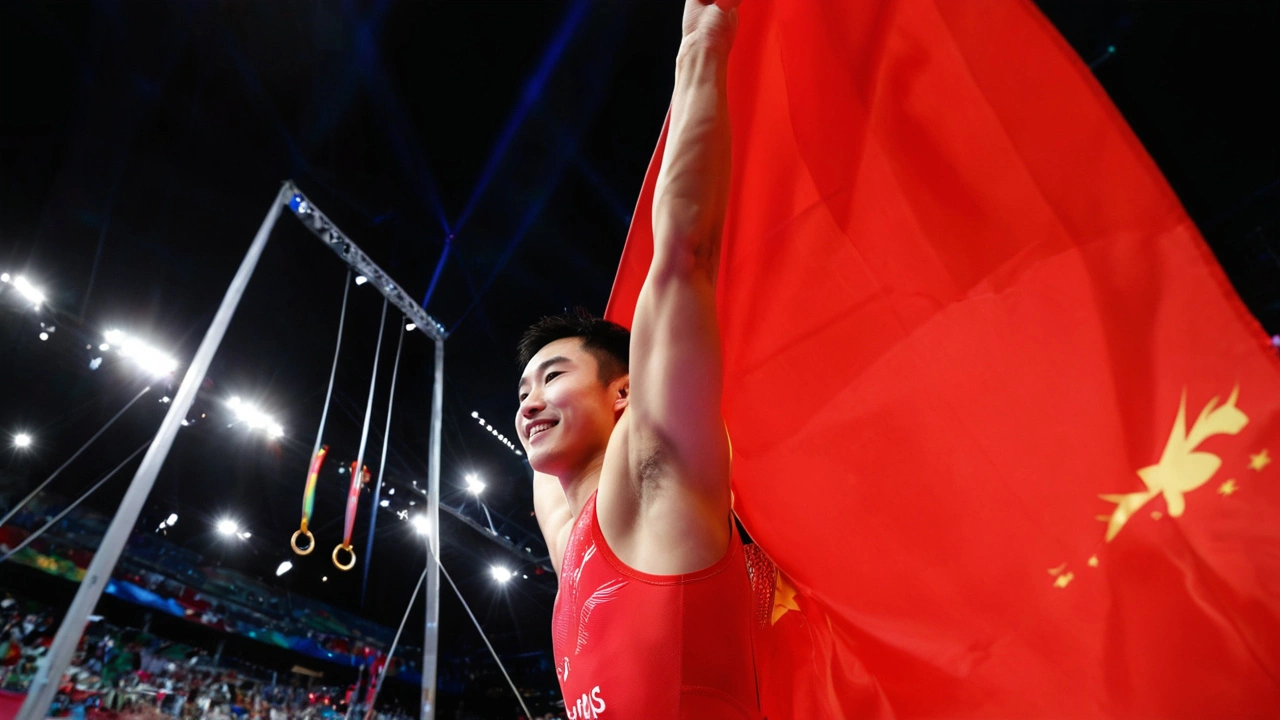Men's Rings Gymnastics: Your Quick Start Guide
If you’ve seen gymnasts swing on two metal circles and wonder how you can try it, you’re in the right place. Men’s rings gymnastics uses a pair of hanging rings to build raw strength, control and body awareness. You don’t need a fancy gym – a set of rings and a sturdy anchor are enough to begin.
What Makes Rings Different?
Unlike a bar or a floor, the rings can move in any direction. That instability forces your muscles to work harder to keep you steady. It’s why rings are a favorite for building upper‑body power that translates to everyday tasks.
Most beginners start with static holds like the support hold and the frog stand. These positions teach you how to lock your shoulders, engage your core and keep the rings from wobbling.
Getting the Right Equipment
Pick rings with comfortable grips – leather or rubber works best. Make sure the straps are at least 2 m long so you can adjust height easily. Hang them from a strong beam, a pull‑up bar, or a ceiling rig that can take at least 200 kg.
Check the anchor before every session. Give the strap a quick shake; if it feels loose, tighten it or move to a stronger point.
First Moves to Master
Support Hold: Set the rings at waist height, grab them, and press your arms straight. Keep your body in a straight line, shoulders down, chest up. Hold for 10‑15 seconds before you feel the burn.
Ring Row: Hang the rings low, walk your feet forward, and pull your chest to the rings. This builds pulling strength for later moves.
Frog Stand: Start in a squat, place the rings beside your hips, and lean forward until the rings support your weight. Your knees should rest on the top of the rings. This teaches balance on the unstable surface.
Progressing Safely
Once you can hold the support for 30 seconds, add a dip. Lower your body a few inches, then push back up. Keep your elbows close to the rings to protect your shoulders.
Next, try the L‑sit. From the support, tuck your knees and lift them straight out in front of you. It’s a great core challenge.
When you feel strong, move to dynamic moves like the skin the cat or muscle‑up. Always use a spotter or crash mat for the first few attempts.
Common Mistakes to Avoid
Don’t let your shoulders roll up towards your ears – that creates tension and risks injury. Keep them down and back.
Never swing wildly between moves. Controlled motion protects your joints and makes progress faster.
Skipping warm‑up is a fast track to soreness. Spend at least five minutes rotating your shoulders, wrists and elbows before you grab the rings.
Putting It All Together
Build a simple routine: 2‑3 warm‑up sets, 3 × support holds, 3 × ring rows, 2 × frog stands, and finish with a core finisher like the L‑sit. Rest a minute between sets.
Track your hold times and reps. Small improvements add up, and you’ll see strength jump in other lifts like pull‑ups and push‑ups.
Remember, consistency beats intensity. Aim for three short sessions a week and you’ll keep the rings feeling like an extension of your body.
Ready to swing? Grab your rings, find a safe spot, and start with the support hold. The more you practice, the more natural the rings become. Happy training!

5
Aug
In an exhilarating performance at the Paris 2024 Olympics, Liu Yang of China clinched the gold medal in the men's rings gymnastics competition with a score of 15.300. Defending his title from the Tokyo 2020 Olympics, Liu outshone teammate Zou Jingyuan, who secured silver, and Greece's Eleftherios Petrounias, who took bronze.
Read More
